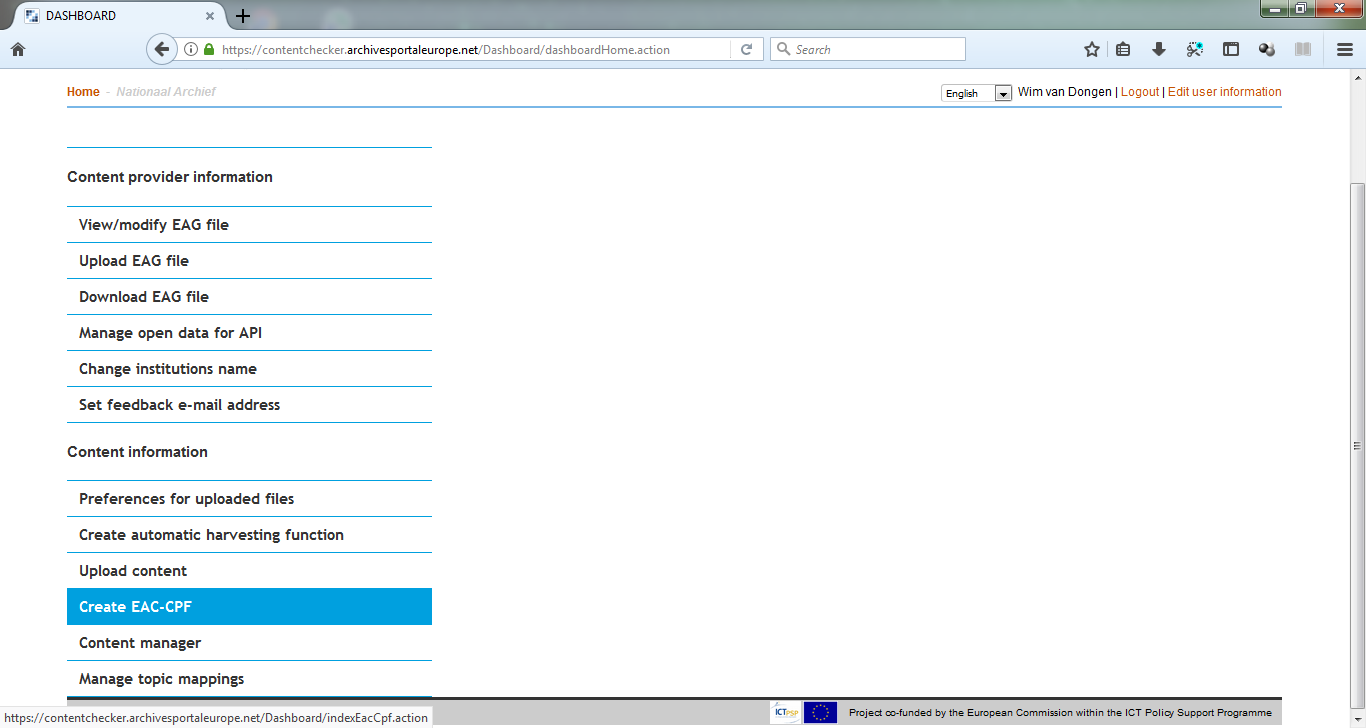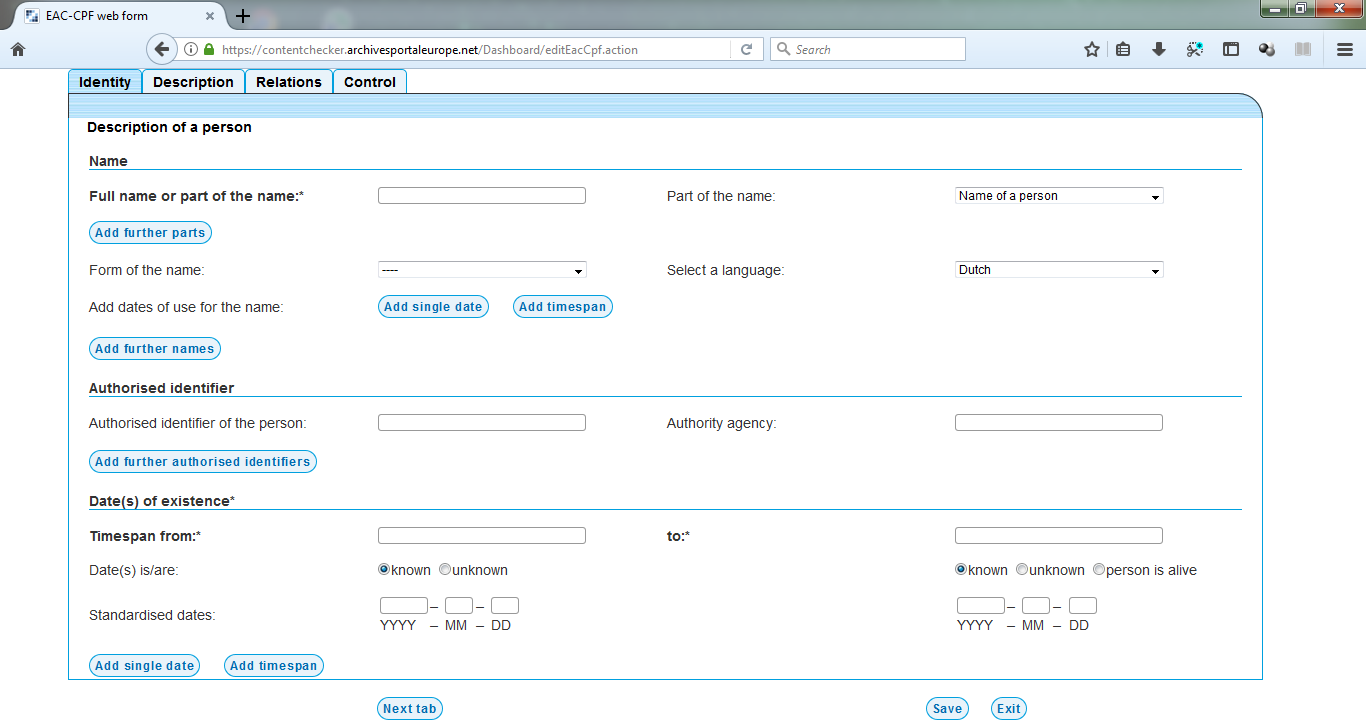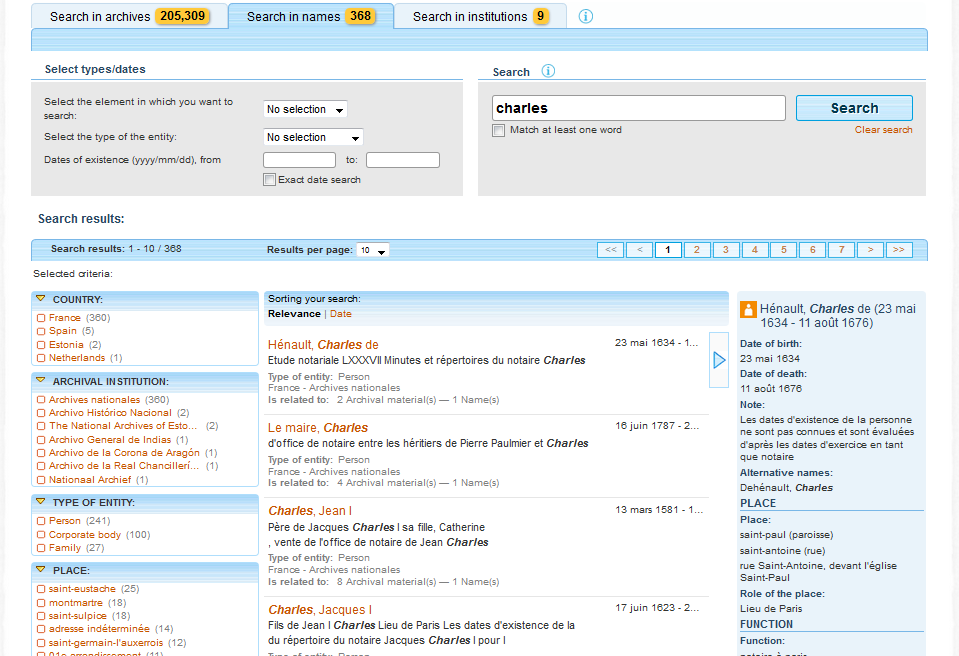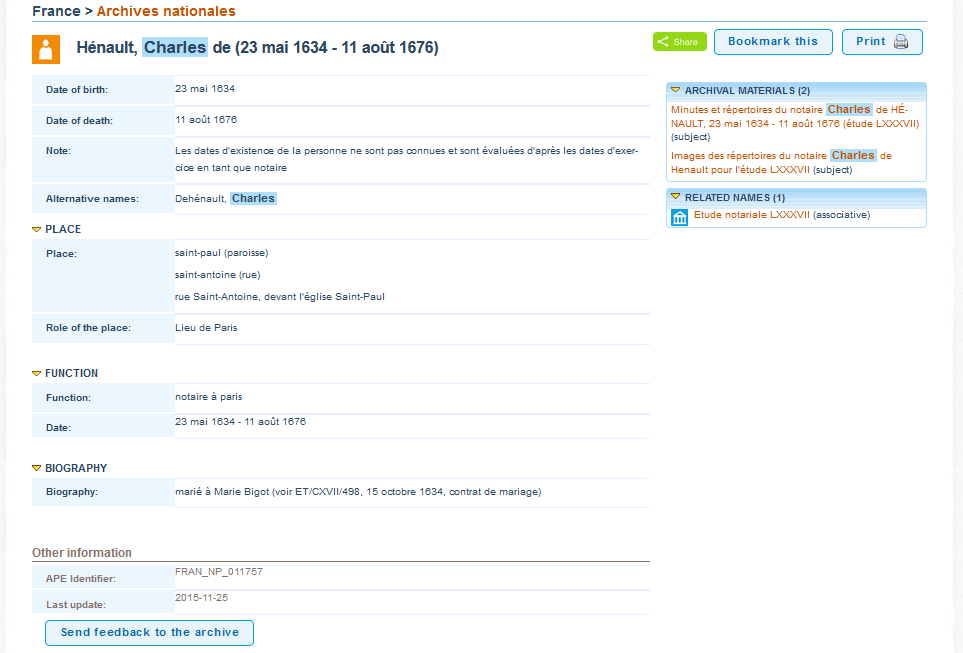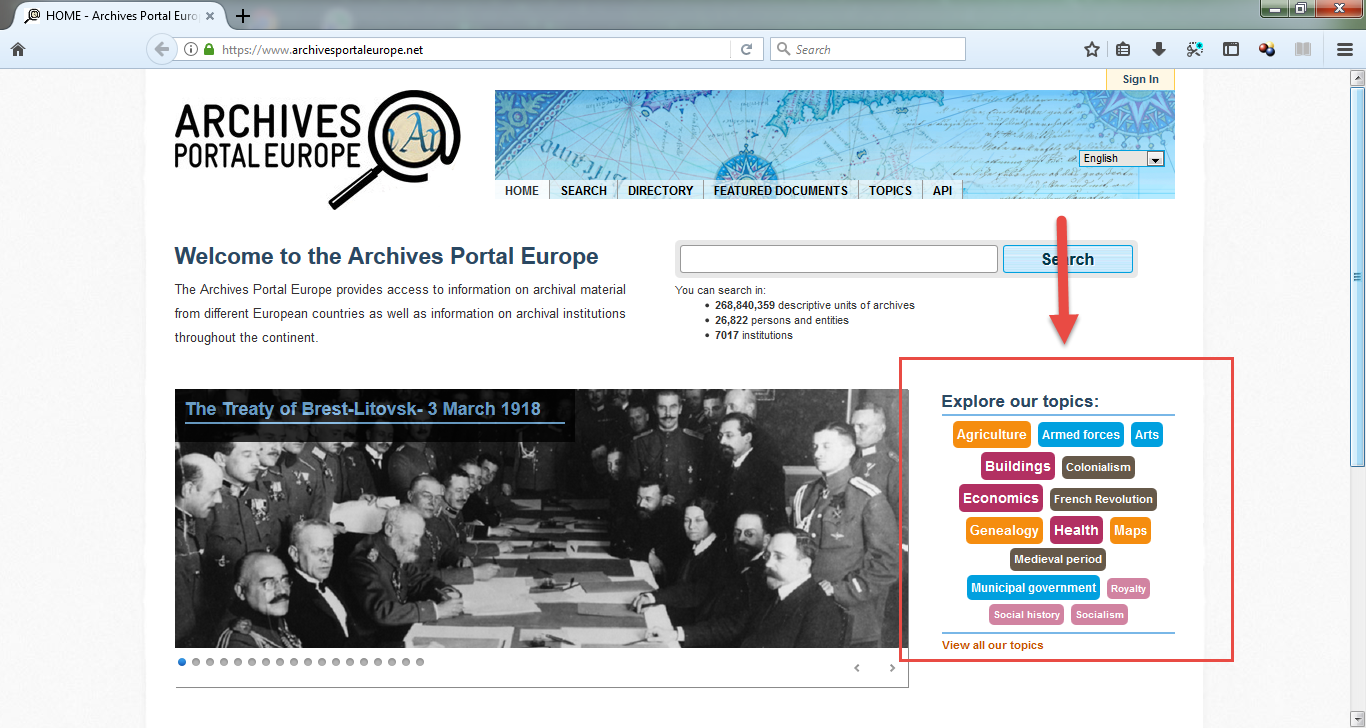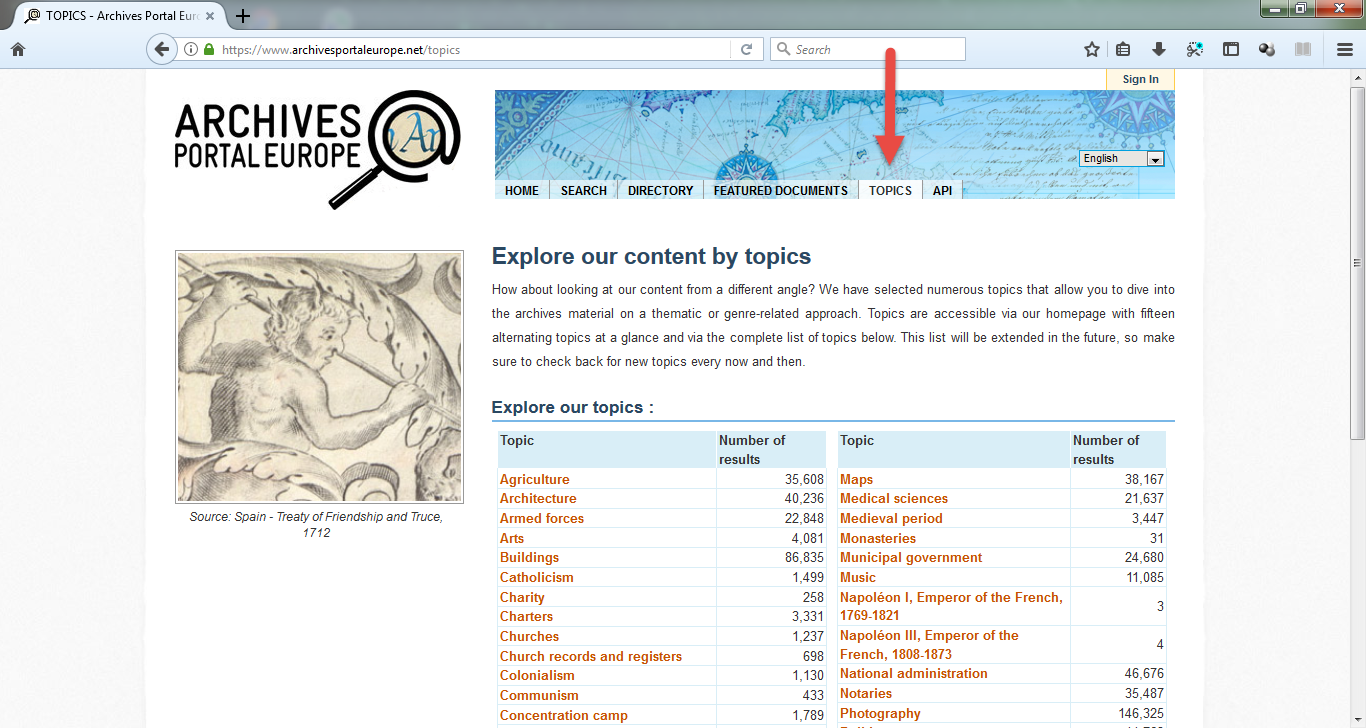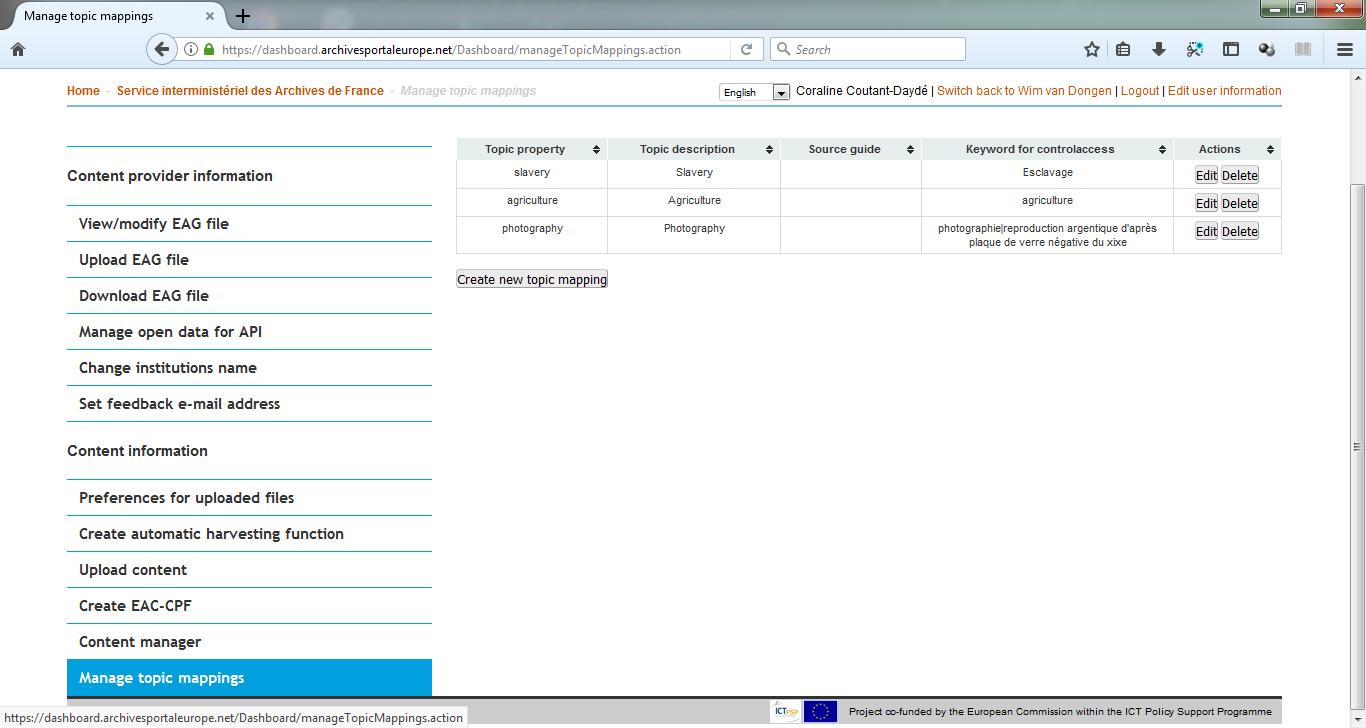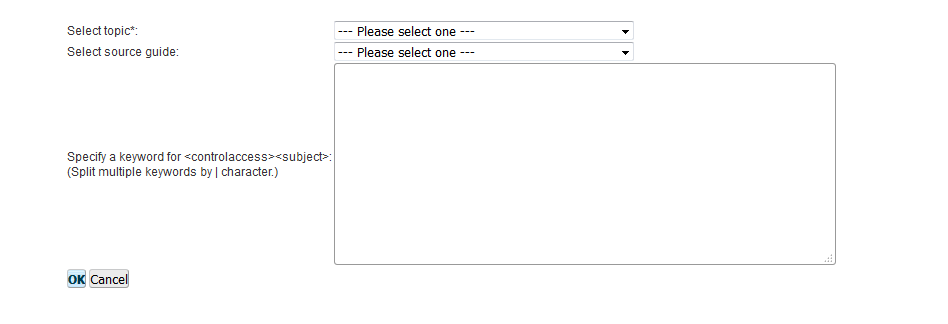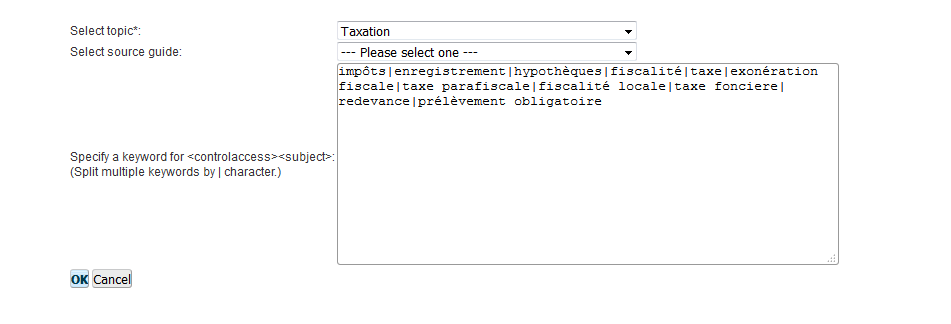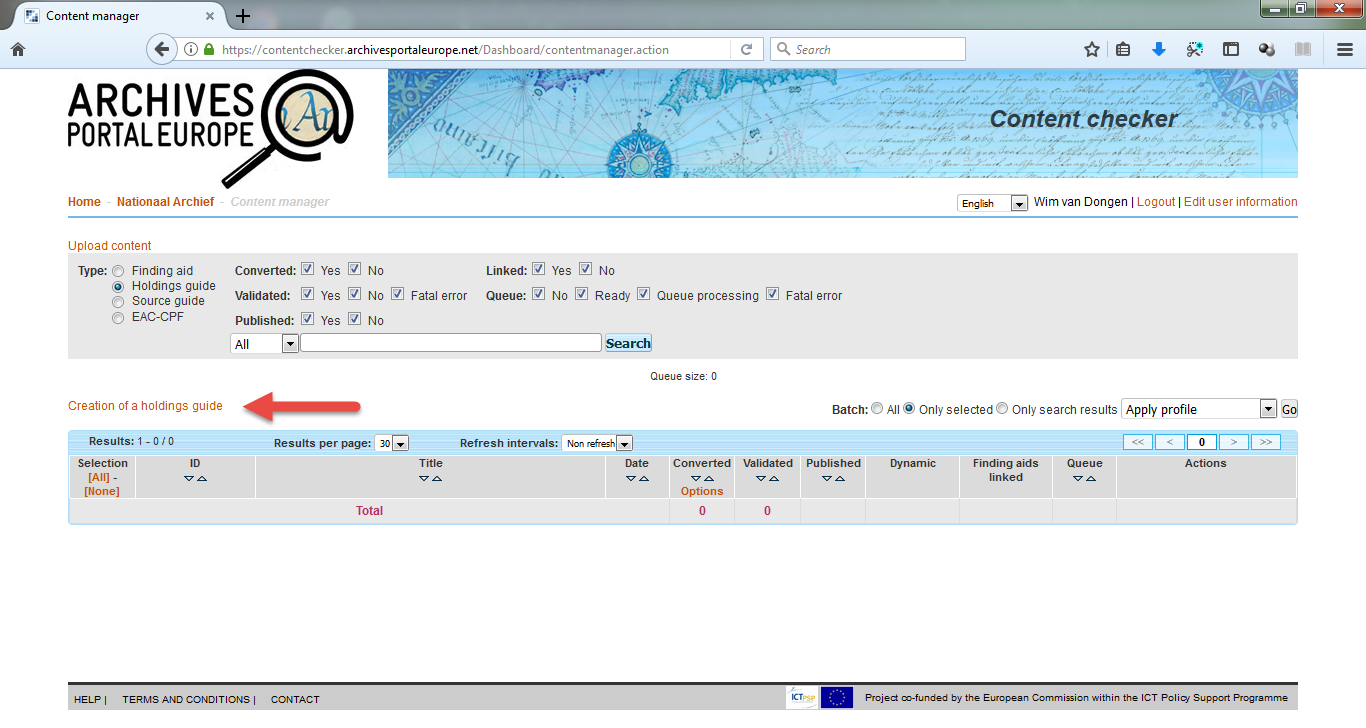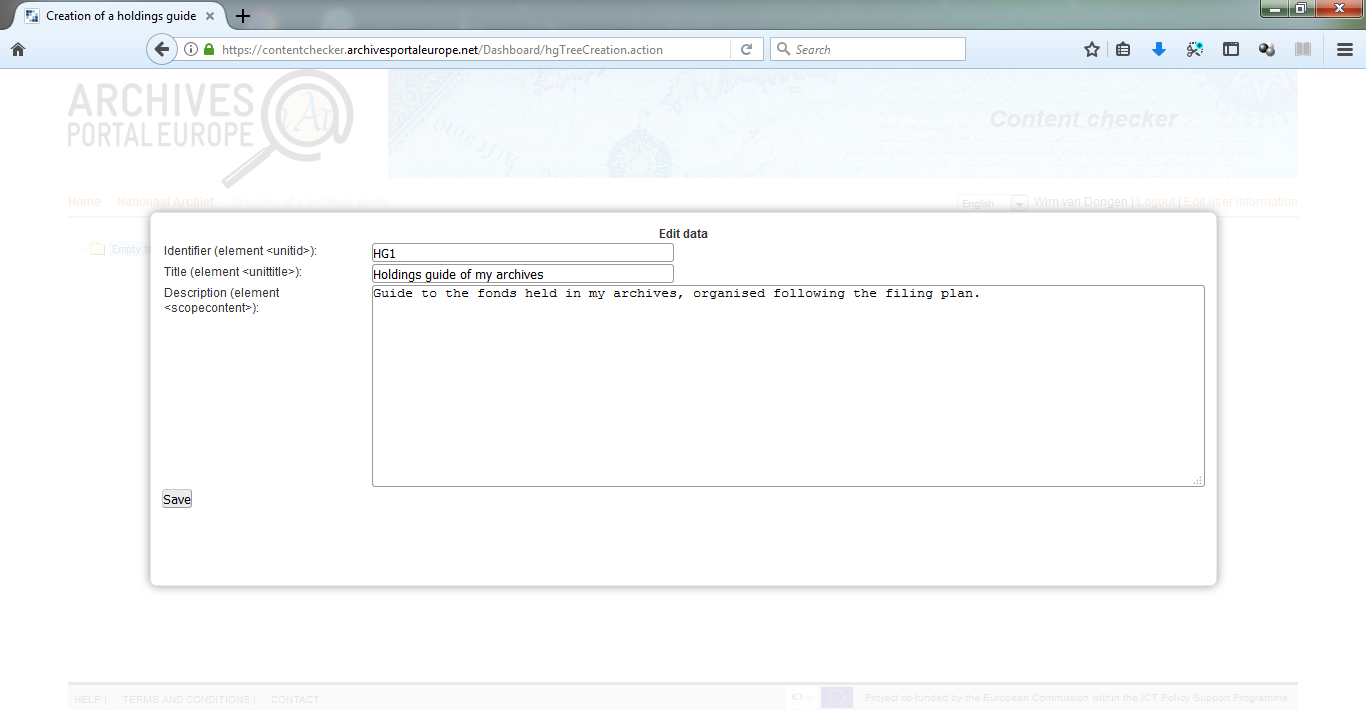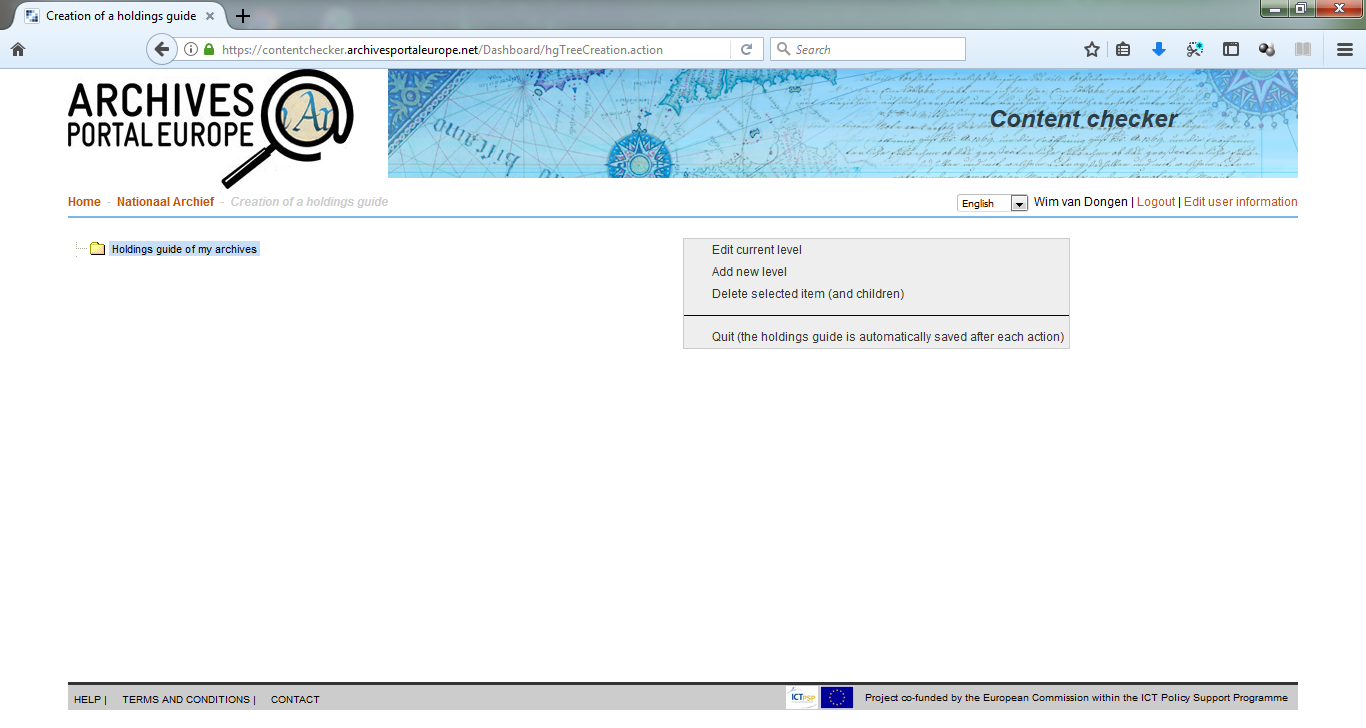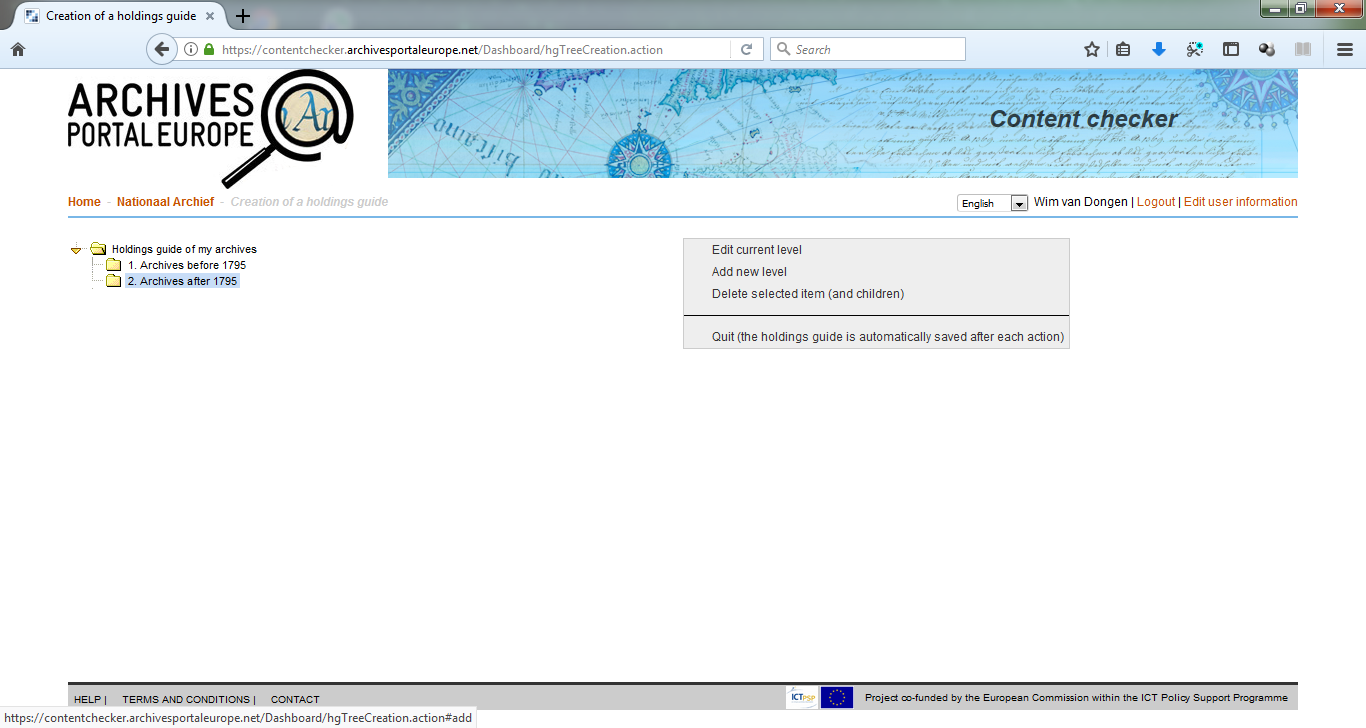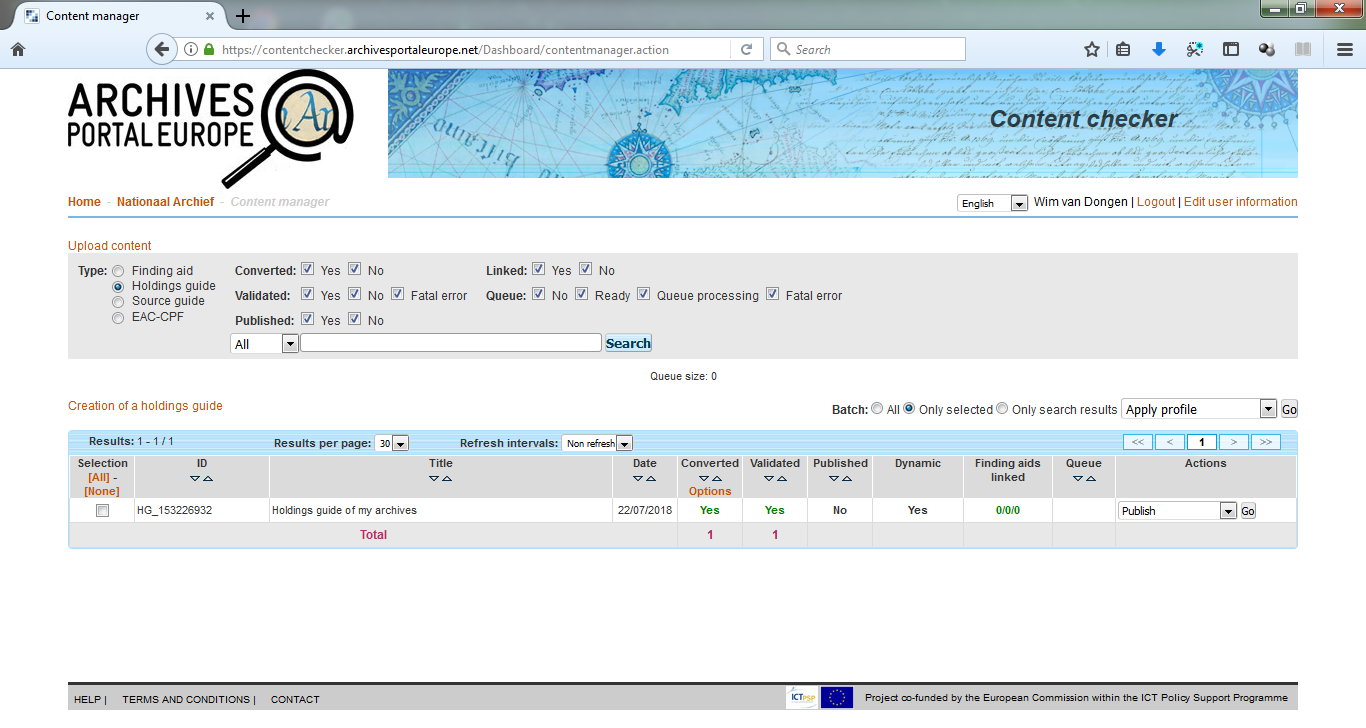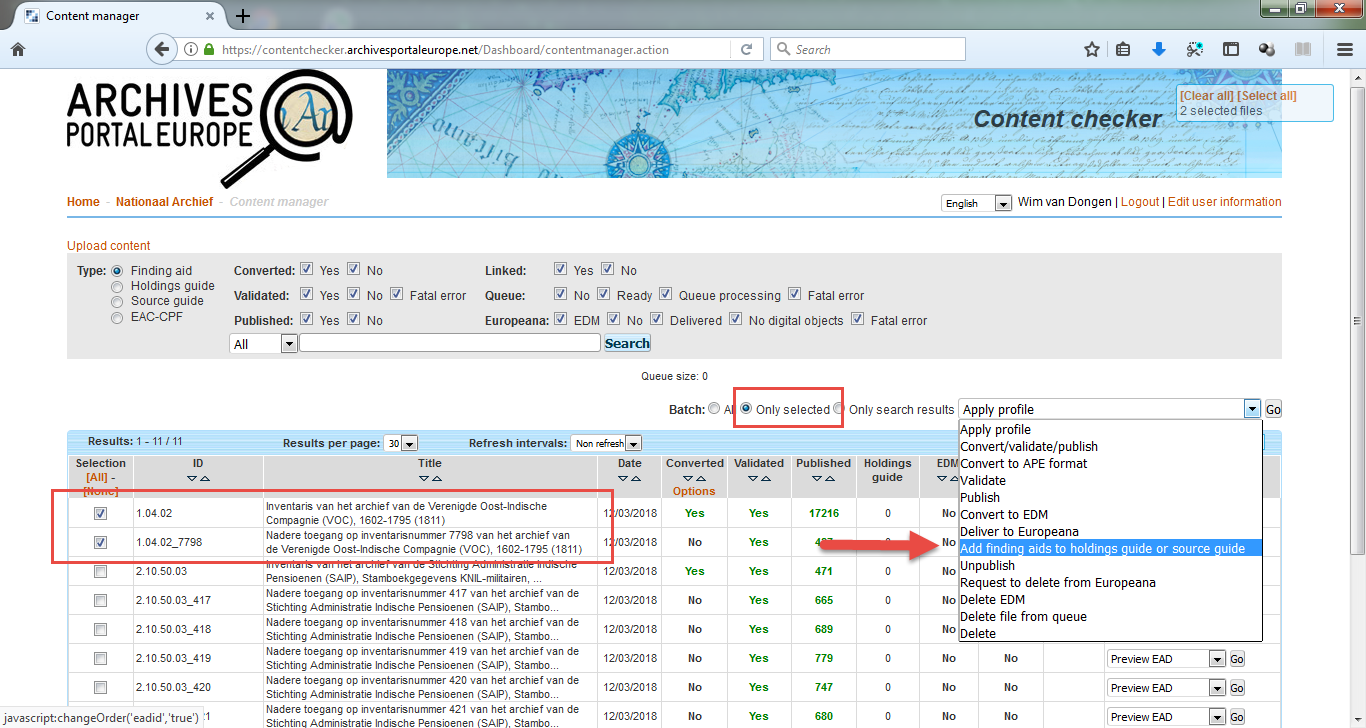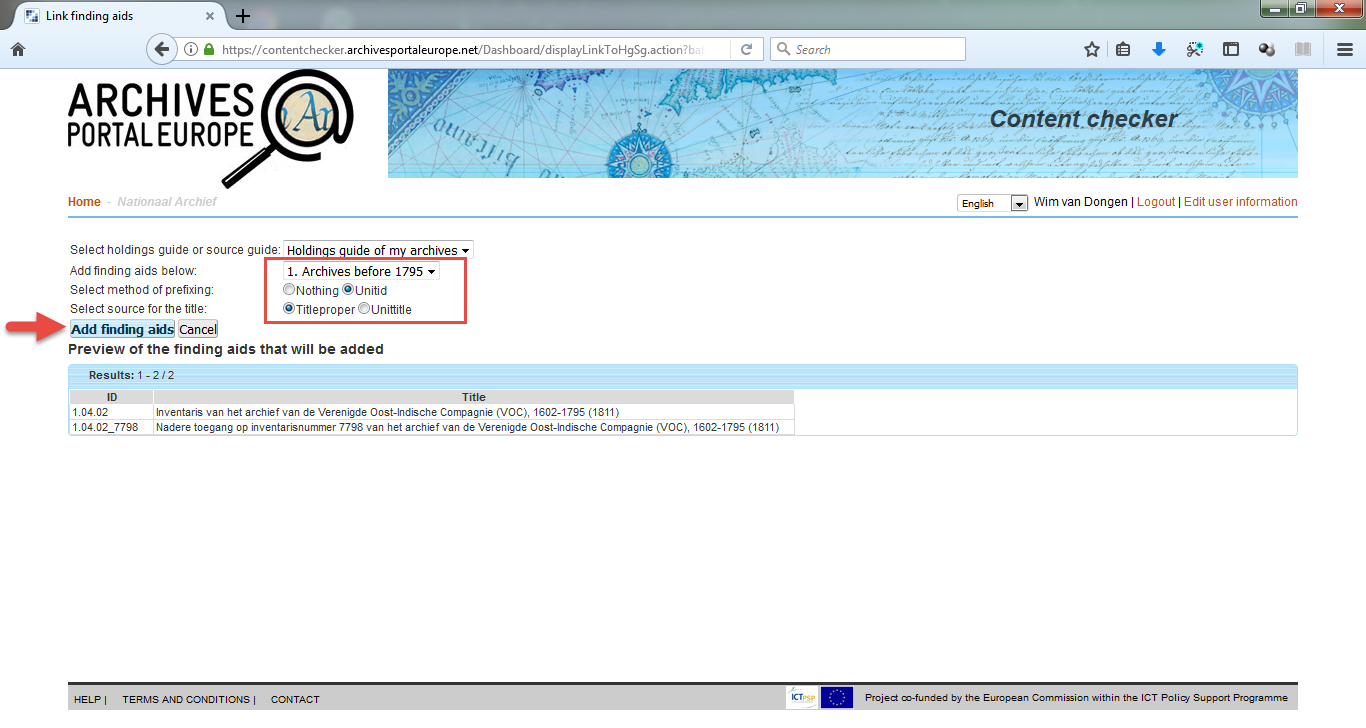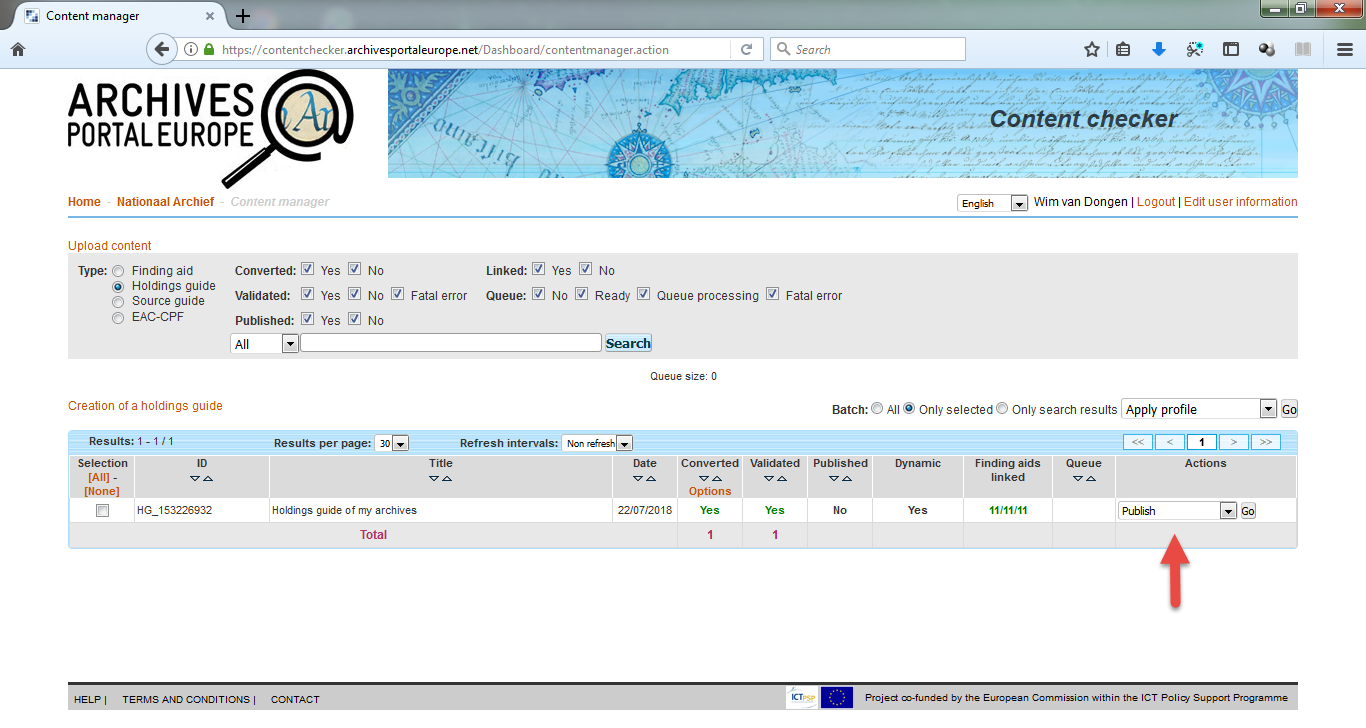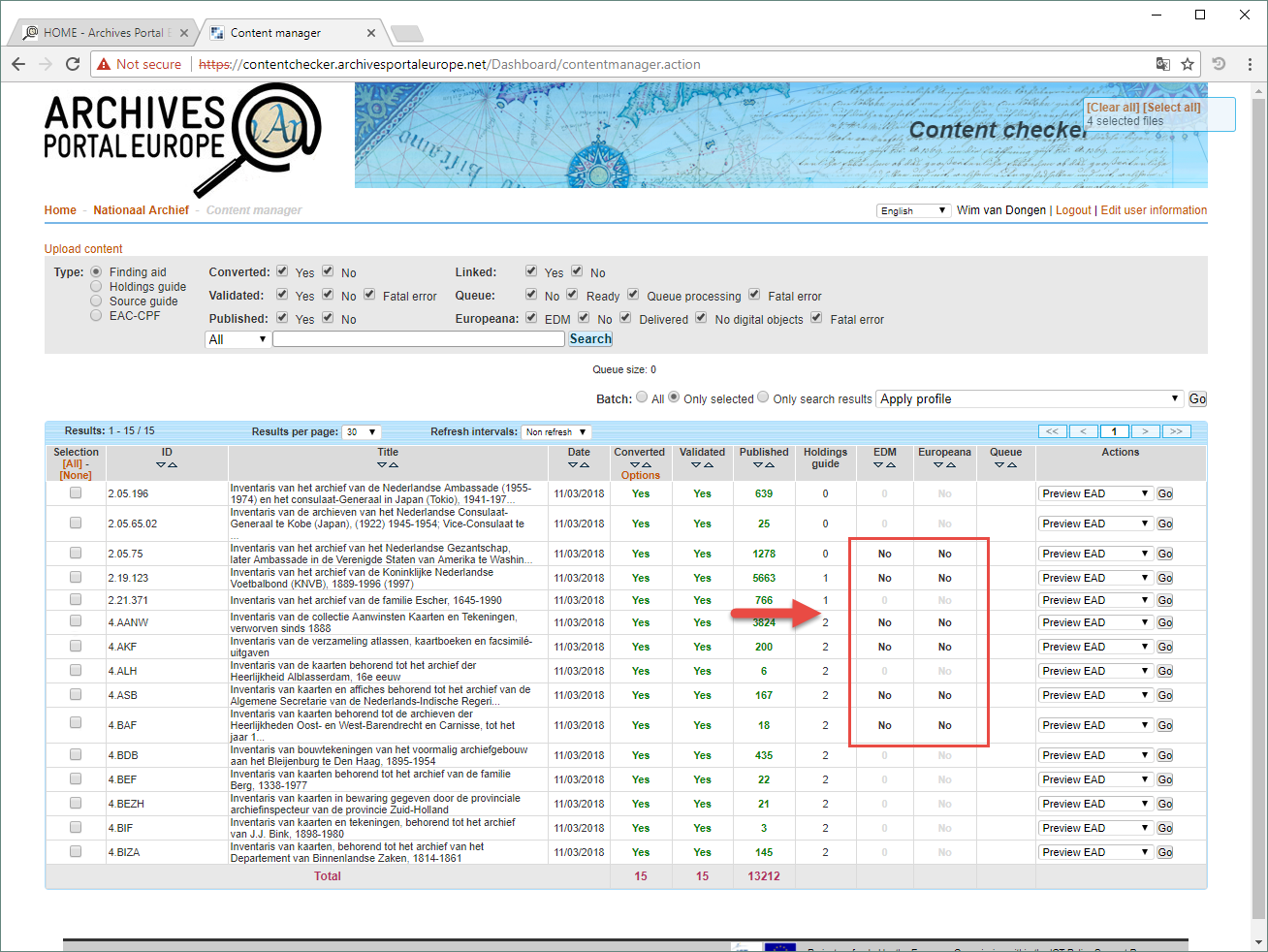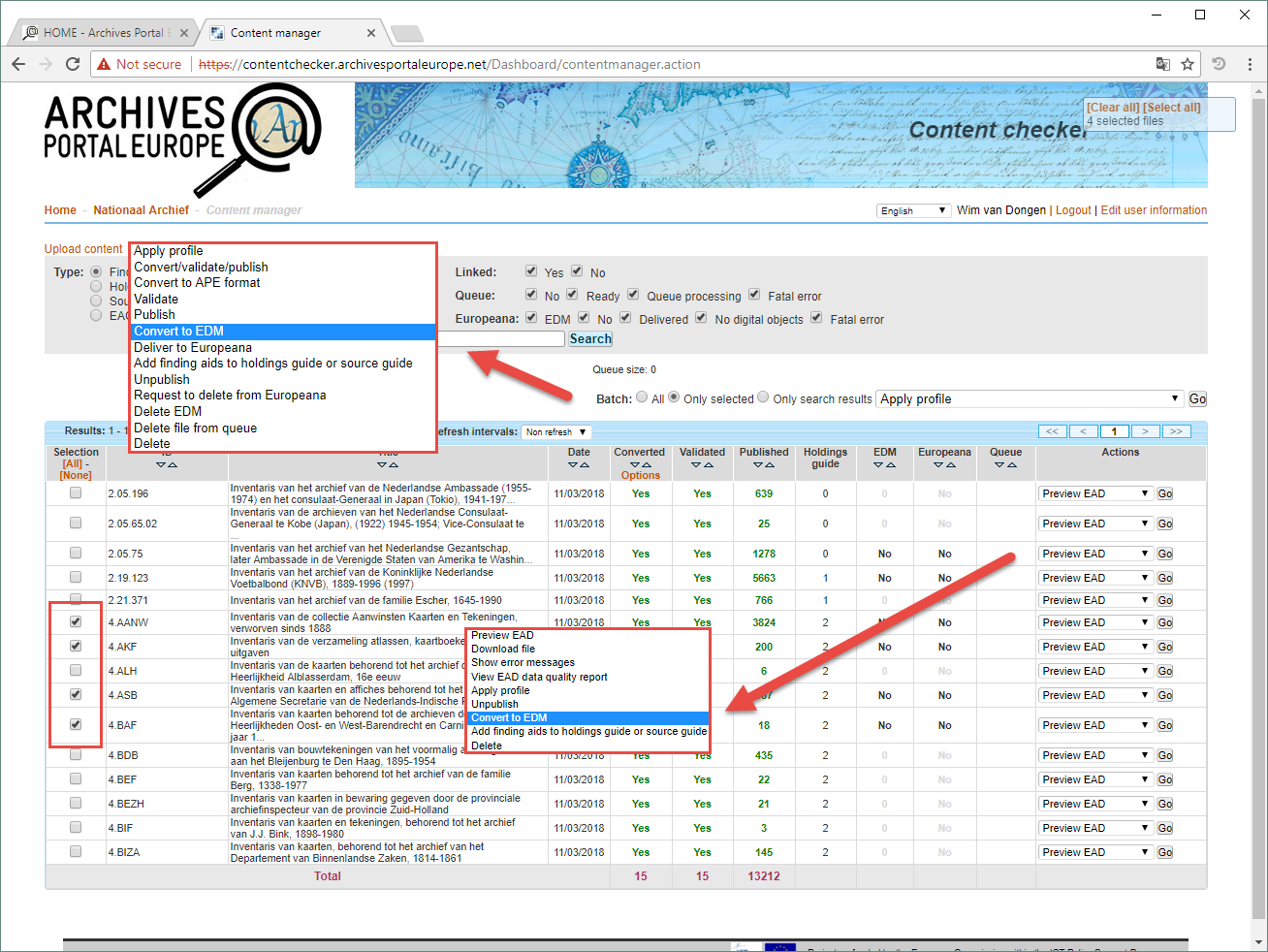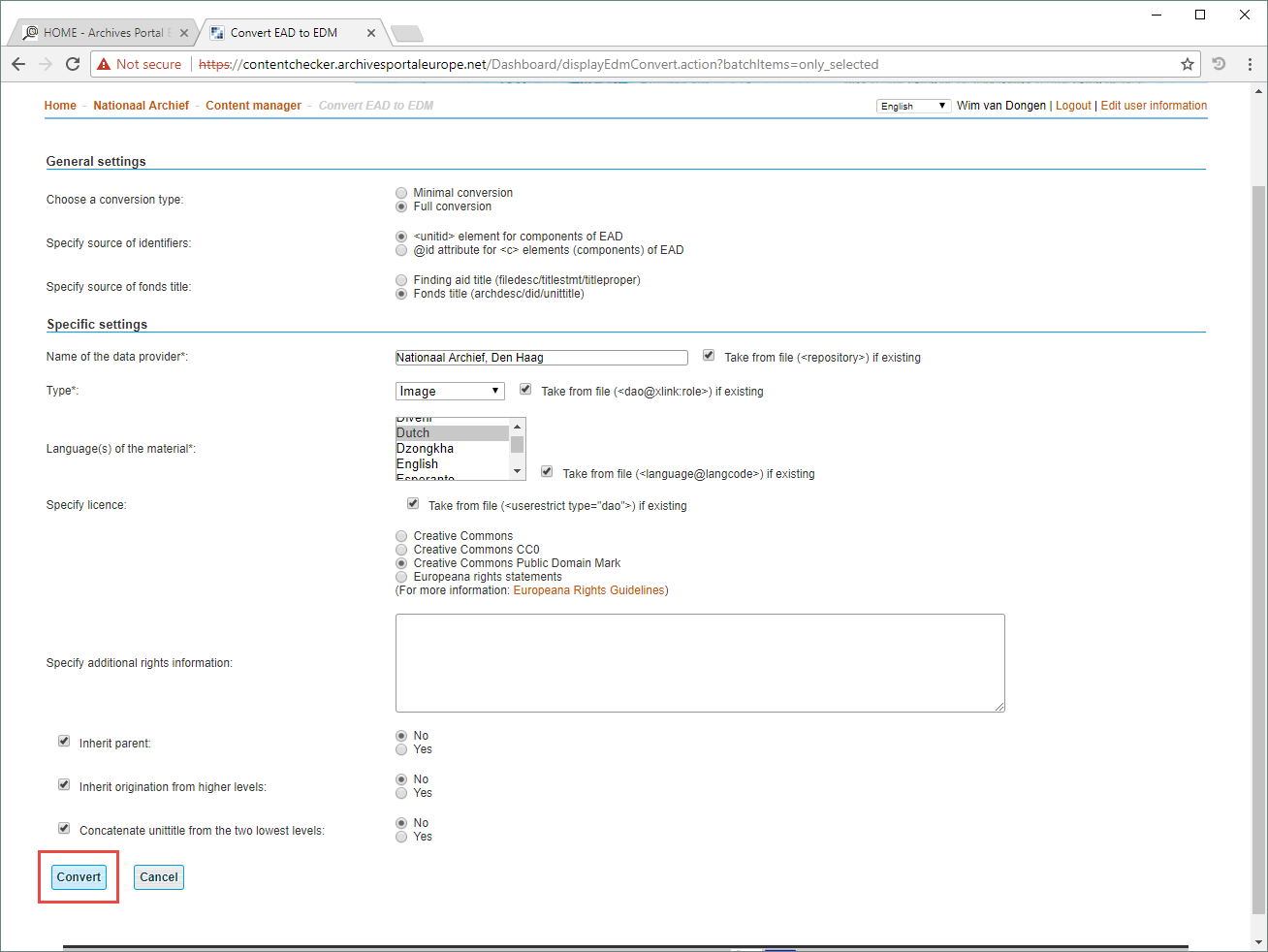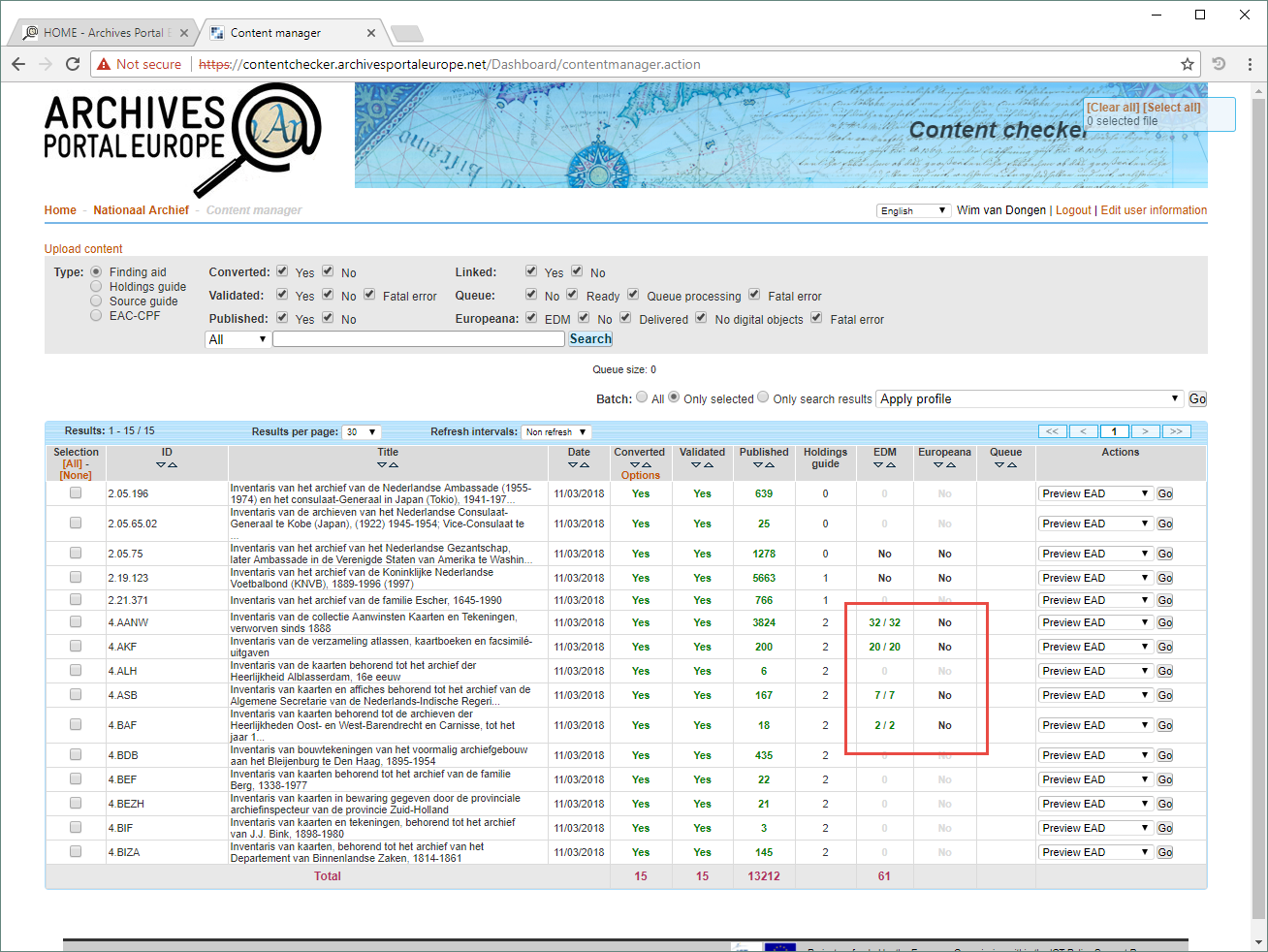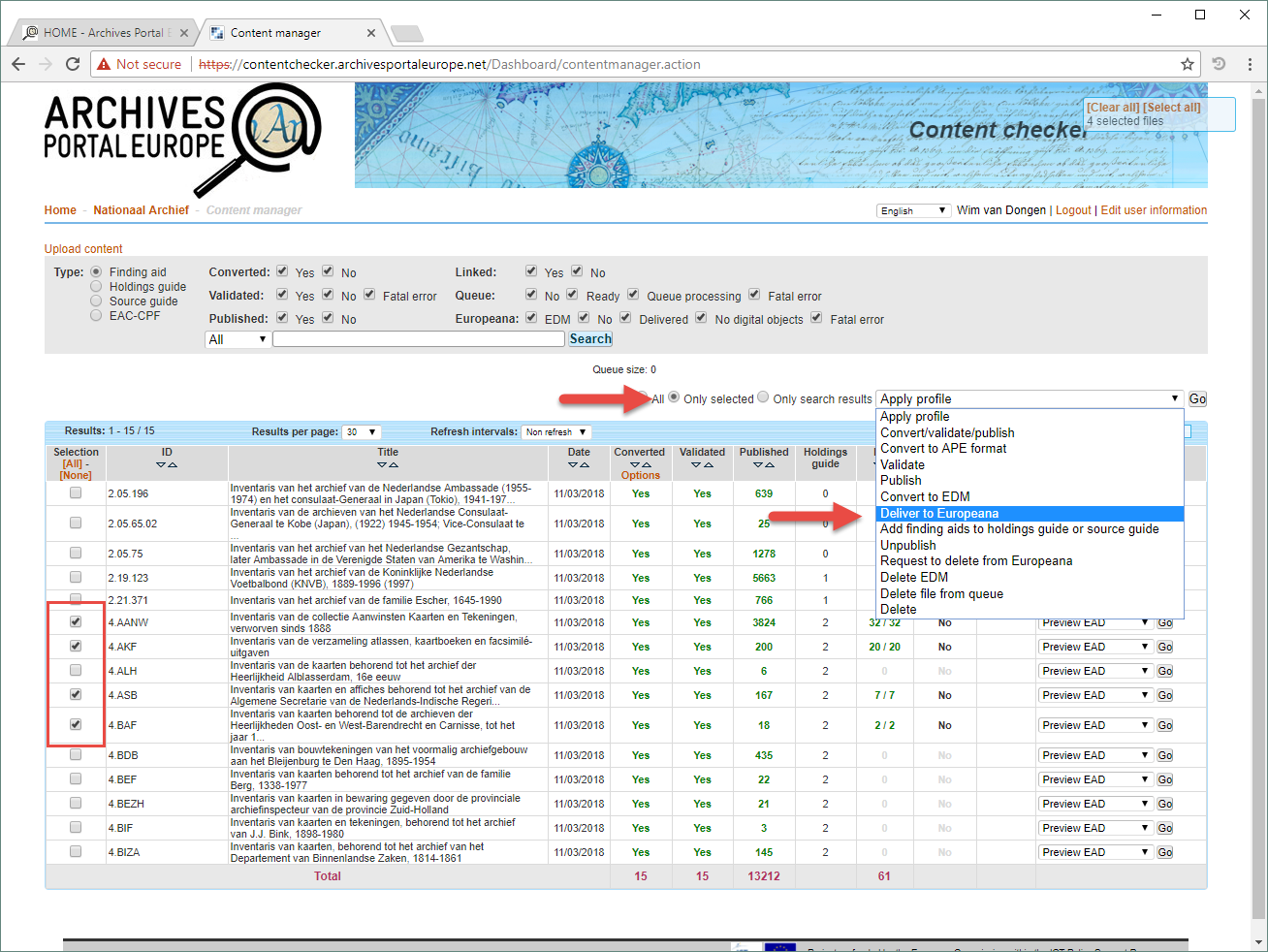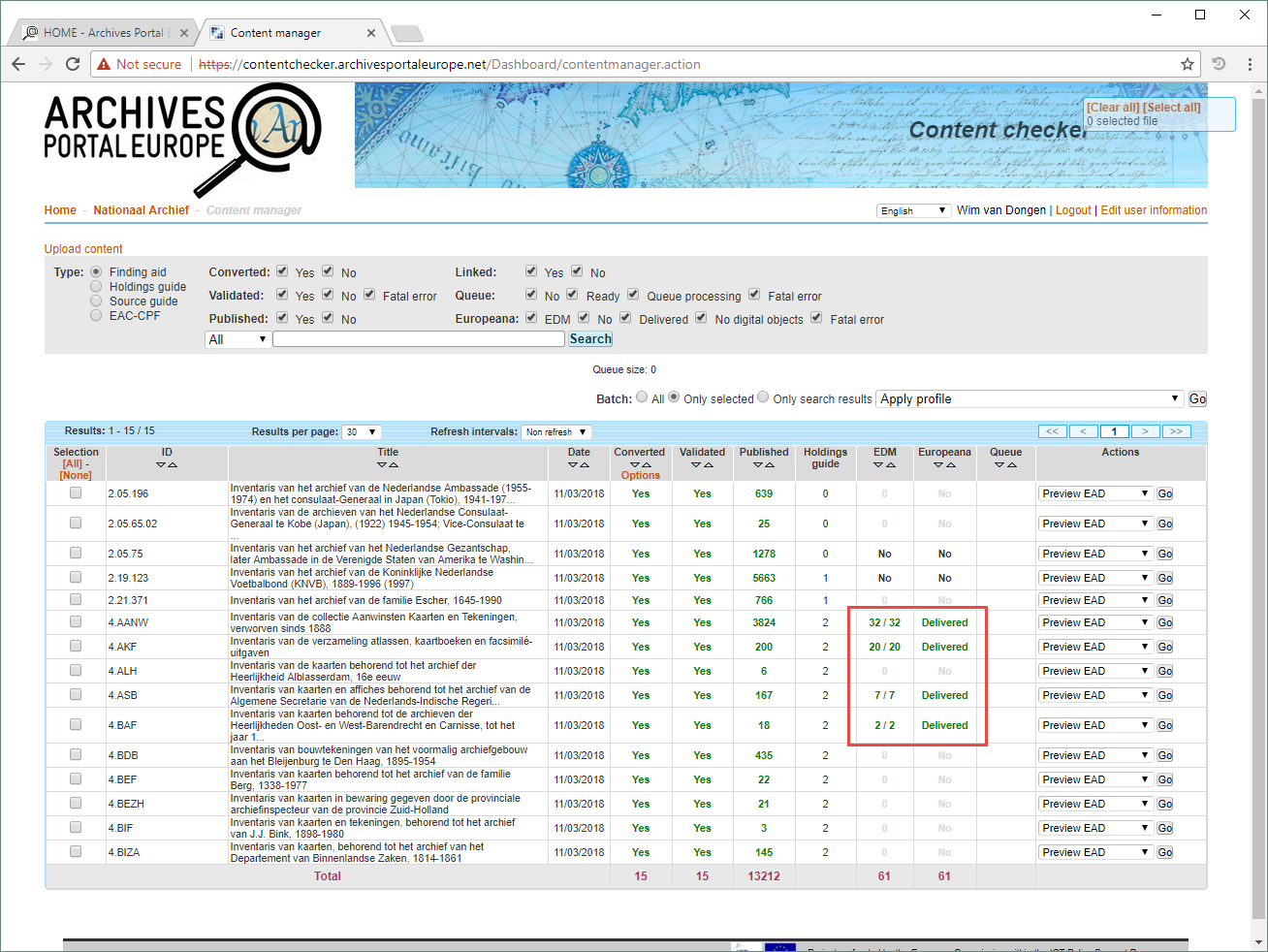Difference between revisions of "Institution Manager manual - Optional actions"
(→Convert data to EDM records and deliver those to Europeana) |
(→Convert data to EDM records and deliver those to Europeana) |
||
| Line 178: | Line 178: | ||
<br clear=all> | <br clear=all> | ||
| − | The conversion of apeEAD to EDM is semi-automatic, so it needs some manual fine-tuning. This can be done via a dialogue screen which reflects the options of the '''''Europeana preferences''''' tab of the [[ | + | The conversion of apeEAD to EDM is semi-automatic, so it needs some manual fine-tuning. This can be done via a dialogue screen which reflects the options of the '''''Europeana preferences''''' tab of the [[Specific_preferences_for_forwarding_content_to_Europeana|creation of profiles]]. |
[[File:APE_IM_manual_63.png|600px|thumb|left|apeEAD to EDM conversion fine-tuning dialogue screen]] | [[File:APE_IM_manual_63.png|600px|thumb|left|apeEAD to EDM conversion fine-tuning dialogue screen]] | ||
Revision as of 19:10, 22 July 2018
The Archives Portal Europe's Dashboard offers some extra - optional - functionalities next to the ones that are necessary for the common workflow, these are:
Create EAC-CPF files
An introduction to Encoded Archival Context - Corporate Bodies, Persons and Families (EAC-CPF) and the use of it in the Archives Portal Europe can be found in the apeEAC-CPF section of this Wiki and the schema for the apeEAC-CPF subset is available over here: http://www.archivesportaleurope.net/Portal/profiles/apeEAC-CPF.xsd.
Content providers, who don't have EAC-CPF files or can't export these kind of files from their own systems, can create EAC-CPF files in the Dashboard using a form. The form does not however cover all possible elements of apeEAC-CPF, but allows entering the key information about an entity. The created files are then available in the content manager, like the other files, but in the EAC-CPF view of the Content manager screen.
The apeEAC-CPF form is available via de link in the Dashboard:
The form is then displayed using the full width of your screen, first you have to select the type of entity that you want to describe:
Next you can fill in the different tabs adapted to each entity type:
The quality of the search in the portal and the facets to refine the search depend on the quality of the data available in the EAC-CPF file:
The display of EAC-CPF files in the Archives Portal Europe facilitates links to original websites and authority files systems, but also to related archival material and related entities as available in the portal:
Manage topics
The topics populate the tag cloud displayed on the homepage of the portal, and are also available in a list via the main menu "TOPICS". They are used as facets in the search results.
The tag cloud only shows a part of the topics available and rotates these with each page refresh, but the main menu option "TOPICS" gives access to all topics i.e. tags of the tag cloud.
There are two ways to activate the topics in the Archives Portal Europe:
- Either rely on the existing indexes of your files (the EAD/XML sub-element <subject> of the element <controlaccess>, at any level of a description in a finding aid), that will be automatically taken into account once you have mapped them in the Dashboard. Please note that if your files are already published in the Dashboard, you will need to unpublish and republish them.
- Either create a specific source guide on a topic and connect this source guide to this specific topic. In this case, topics will be connected only at the high level of a description (<archdesc>), so applied to the whole finding aid, therefore, it is recommended to only use this way of connecting topics to thematic finding aids, so not to general ones which might have a few descriptions related to the topcis, because that would pollute the search results for that topic.
The screenshot shown above shows the link to the Manage topic mappings functionality in the Dashboard. It also shows already created topic mappings and the way you can manage those: you can order the columns, modify or delete an existing topic or create new topic mappings.
The "Topic description" contains the original (English) term that is displayed in portal and that you can translate in the project "topics" of Archives Portal Europe Translation Tool.
The "keyword for controlaccess" is the place to map your own terms with the topics of the portal. In the example above, the topic "Slavery" is mapped to the term "Esclavage", a term that is used in French finding aids.
The "source guide" column is automatically filled in when a source guide is linked to a topic.
When creating a new topic mapping, you have two dropdown lists at the top:
- The first one allows you to select the topic from the existing list, which can be changed only by a general system administrator, at a request.
- The second one allows you to link a topic to an existing source guide (either already existing in your websites and uploaded in the portal, or created on purpose in the Dashboard to take advantage of the topics functionality of the portal).
In addition you can enter extra terms, related to the topic, that can be found in your finding aids. These terms are case insensitive: "Taxation" or "taxation" will be indexed equally.
The limitation of characters is set to 1000. It allows entering a lot of synonyms in the case of very general topics that do corresponds to numerous specific terms.
Once created, it takes around 10 to 15 minutes before "your" topics are taken into account in the tag cloud.
To help you map the topics with your existing index entries or thesauri, a new functionality has been developed in the Data Preparation Tool. You can list all <subject> elements of all your files in one go, and see which are the most relevant and important ones, so which could be mapped to the existing list of topics of the portal.
Note: connecting a source guide to a topic is described in more detail in the FAQ How to use topics in this Wiki.
Create holdings guides and source guides
The Dashboard offers the possibility to create basic holdings and source guides.
The holdings guide offers high level descriptions of all fonds of an archival institution and links to the detailed finding aids, when these are available. It is the second layer of the three-layer structure of the content of the portal: institutions / holdings guides / finding aids. If an institution doesn't have any finding aids, creating a holdings guide can be a way to nonetheless describe its fonds and its filing plan and thus still publish basic information on the archival material it holds via the Archives Portal Europe.
A source guide is based on the same principle as the holdings guide, but preferably contains high level descriptions of all fonds of an archival institution on a particular theme or topic. Thus the source guide, once created within the Dashboard or uploaded to it, allows selecting and grouping finding aids on certain themes/topics, preferably those of the portal.
Note: there is an instruction video available on how to create holdings guides (and source guides), you can find that over here.
You can access the Dashboard functionality for creating a holdings guide via the link Creation of a holdings guide in the Holdings guide view of the Content manager screen.
Note: in the Source guide view of the Content manager screen you can find the link Creation of a source guide, which leads to the same functionality for creating a source guide, so the next steps for creating a holdings guide are also applicable for creating a source guide.
Creating a holdings or source guide is done in two steps: first you create the structure of the file, then you link the finding aids to this structure.
Creating the structure of the guide
The link Creation of a holdings guide in the Holdings guide view of the Content Manager screen opens a dialog screen in which you have to provide a minimum set of information for the holdings guide: an identifier, a title and a description (the latter not mandatory). This functionality produces a holdings guide in EAD/XML format. Note that the <eadid/> of the file will be provided automatically by the Dashboard.
After having filled and saved this form, you end up in this screen where you can "build" the structure of your holdings guide by creating extra levels and sublevels. The same form is used for each level and after filling in and saving these forms, the result will be displayed like this again.
Using the Edit, Add and Delete options in the grey box in this screen you can add more levels and sublevels and edit and delete them.
Note: this holdings guide creation functionality is a one-shot: you can't modify its structure or descriptions within the dashboard after having saved it via the option Quit. After that the only possibility for future changes (except linking finding aids) is to download the holdings guide, adapt it in an XML editor and then upload it again.
The different levels are to be seen as "node" where you can link your finding aids during the second step. Once saved, the HG is visible in the content manager. Its status is set to "Dynamic", and the linking is set to "0/0/0", indicating that there is no finding aid linked nor linkable yet.
Linking the finding aids to the guide
Once you have created a holdings guide in the Holdings guide view of the Content manager, you have to switch to the Finding aid view of the Content manager to be able to link finding aids to the holdings guide.
You have to select the finding aids for each holding guide level, level by level and then choose "Add finding aids to holdings guide or source guide" either as a batch option or in the dropdown box list of actions (the latter in case you only have to link one finding aid). You can use the facilities of the content manager to order your files by title or by identifier. This order will be kept within the holdings guide.
The selected finding aids are listed and you are asked to select certain options:
- choose the holdings guide that you want to link in the dropdown list,
- select the level (the "node" previously created and forming the structure of the holdings guide) to which the finding aids should be linked,
- choose the prefix that will appear in the display (no prefix or the Unitid, which is the identifier or number of the finding aid (the value of the EAD/XML element <eadid/>)),
- choose what title of the finding aid will appear in the display of the holdings guide (either the value of the EAD/XML element <titleproper/> or <unittitle/> ).
Note: be aware that - again - this is a one-shot: once linked you can't unlink a finding aid from a holdings guide; but you can add new finding aids once uploaded in the Dashboard later on, if your structure has all needed levels and sub-levels.
You can check the result in the Content manager: the linked finding aids are indicated in the Holdings guide column with the corresponding number (the number 1, for being linked one, or higher, for example if a finding aid is linked also to a (or more) source guide(s)).
Now all you have to do is to switch back to the Holdings guide view of the Content manager and "publish" the holdings guide which you have created and linked finding aids to. Then you can check the result in the portal: when you expand the tree in the advanced search for your institution, it shows the hierarchy between the holdings guide and the finding aids. Users can now check mark indivudial finding aids to be only taken into account when searching and they have - via the holdings guide - direct links to the full display of finding aids in the portal.
Convert data to EDM records and deliver those to Europeana
The Archives Portal Europe is the aggregator for the European archives community for Europeana, which collects and publishes digital objects and metadata from all kinds of European cultural heritage institutions (archives, audio-visual institutions, libraries, museums). Europeana uses its own metadata model, EDM, so when forwarding content to Europeana via the Archives Portal Europe there are two things to be taken care of: first you should be able to select content which qualifies to be forwarded to Europeana, so only digitised content, and secondly, the metadata the is about these digital objects should be converted from apeEAD to EDM.
In the Content manager screen you can easily recognise the finding aids that contain links to digital objects. Those are the finding aids which have No in black in the column EDM and No in black in the column Europeana (the finding aids that have a grey "0" in the column EDM and a grey "No" in the column Europeana don't contain links to digital objects).
The explanation for these two black No's is simple, they mean: Yes, they contain links do digital objects, but No they are not conversted to EDM yet and No they are therefore also not forwarded to Europeana yet.
Once the content suitable for forwarding to Europeana is recognised it can be selected to be converted to Europeana EDM records, either via the batch function Convert to EDM or via the same function per finding aid in the Actions column.
The conversion of apeEAD to EDM is semi-automatic, so it needs some manual fine-tuning. This can be done via a dialogue screen which reflects the options of the Europeana preferences tab of the creation of profiles.
